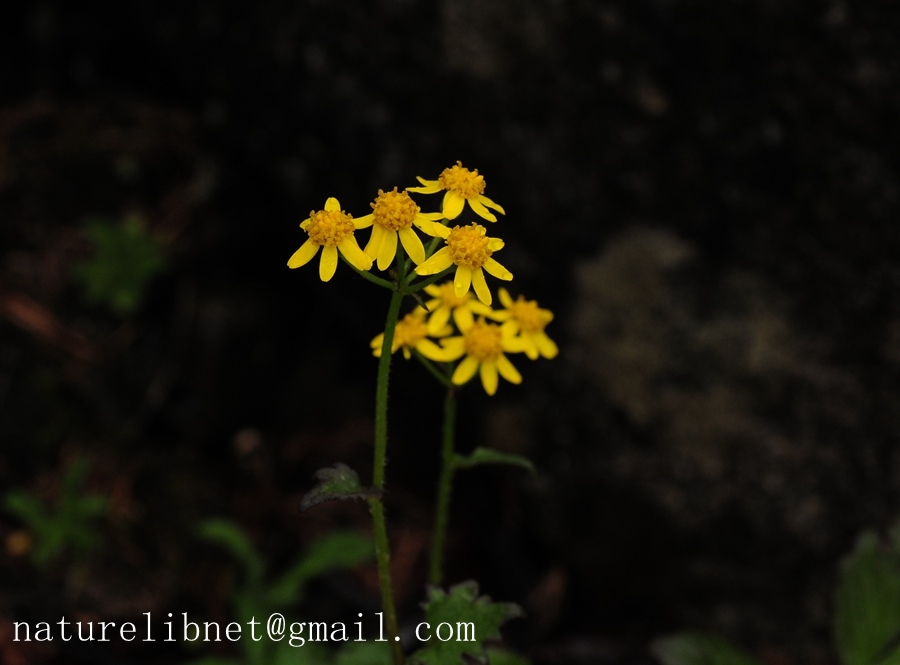- Scientific Name: Sinosenecio euosmus (Hand.-Mazz.) B.Nord.
- Ref: Opera Bot. 44:50. 1978
- Synonym: Senecio winklerianus Hand.-Mazz.
- Chinese Common Name: 耳柄蒲儿根 ěrbǐng púrgēn, 齿裂千里光 chǐliè qiānlǐguāng
- Family: Asteraceae
- Genus: Sinosenecio
- Distribution: Woods, grasslands, streamsides; 1800-4000 m. Gansu, Hubei, Shaanxi, Sichuan, Yunnan [Myanmar].
- Photo: 07/21/2011, Mt. Taibai, Qinling
Herbs, stoloniferous, with leafy stems. Rhizomes ascending or procumbent, slender. Stems solitary, erect, 20-75 cm or taller, ca. 6 mm in diam. at base, simple, ± villous or arachnoid-tomentose, especially in lower part, sometimes glabrescent in upper part. Radical leaves withered by anthesis; median stem leaves long petiolate; blade adaxially green, ovate, broadly ovate, or reniform, 2-5 × 3-8 cm, abaxially arachnoid-tomentose or villous on veins or rarely subglabrous, adaxially villous, sparsely arachnoid, shortly pubescent, or subglabrous, base shallowly cordate to subtruncate, margin shallowly to sometimes rather deeply palmately divided into 5-13 lobes or large teeth; lobes subdeltoid, shallowly crenate or shallowly to deeply mucronulate-dentate, apex rounded to acute. Upper leaves smaller. Uppermost leaves linear, bractlike. Petiole 1-2 × as long as blade, ± villous arachnoid or subglabrous, those of lower leaves not auriculate, slightly expanded at base, those of median and upper leaves usually gradually expanded into ovate or orbicular, entire or dentate subamplexicaul auricles, rarely all leaves inconspicuously auriculate. Capitula 5-15 or more arranged in terminal subumbelliform corymbs or compound corymbs; peduncles 0.5-5.5 cm, slender, sparsely to densely ascending villous, sometimes with a linear basal bract, without or sometimes with a subulate bracteole. Involucres subcampanulate, 4-6 × 2.5-6.5 mm, not calyculate; phyllaries ca. 13, lanceolate or linear-lanceolate, ca. 1 mm wide, herbaceous, glabrous or subglabrous, margin membranous, apically acute, purplish and ciliate. Ray florets 10-13; corolla tube ca. 2 mm, glabrous; lamina yellow, oblong or linear-oblong, 3.5-4 × ca. 1.5 mm, 4-veined, apically 3-denticulate. Disk florets many; corolla yellow, ca. 4 mm, with ca. 2 mm tube and campanulate limb; lobes oblong, apically acute. Anthers ca. 1.5 mm, basally obtuse to rounded, appendages lanceolate. Style branches ca. 1 mm. Achenes cylindric, ca. 1.8 mm, smooth, glabrous. Pappus white, 5.5-6 mm. Fl. Jun-Aug, fr. Jul-Sep. 2n = 48*. (Flora of China)
